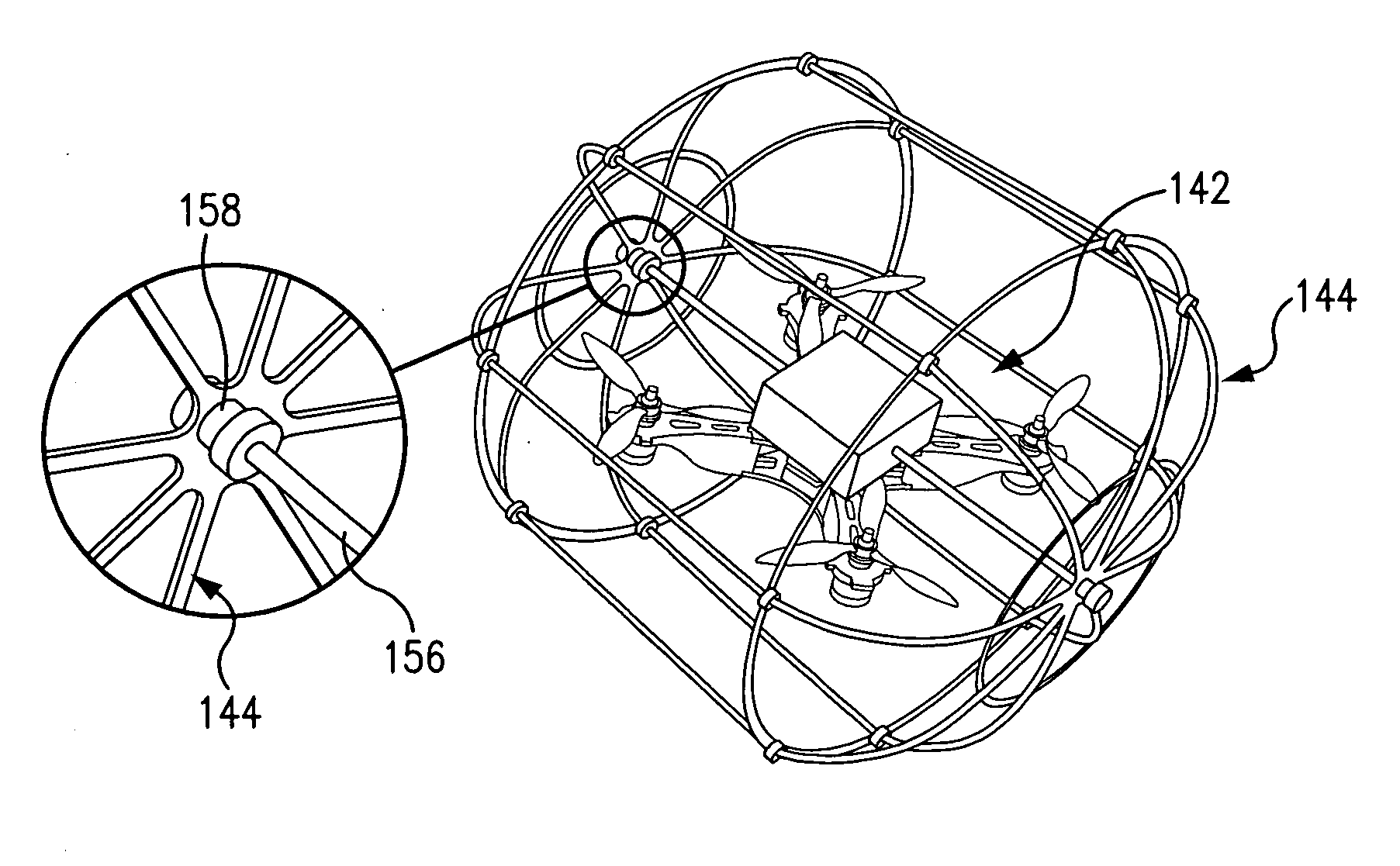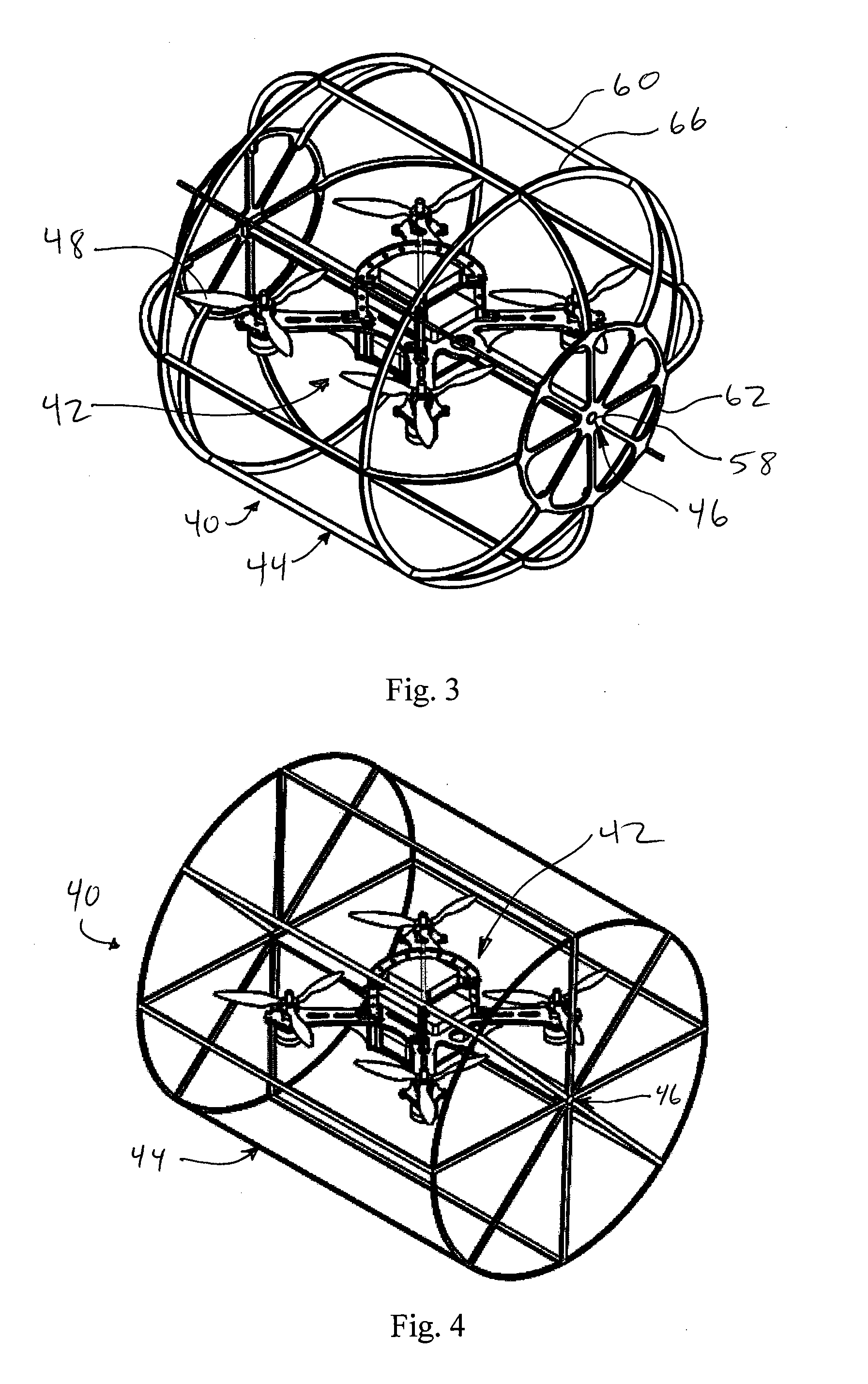Hybrid aerial and terrestrial vehicle
- Summary
- Abstract
- Description
- Claims
- Application Information
AI Technical Summary
Benefits of technology
Problems solved by technology
Method used
Image
Examples
Embodiment Construction
[0032]This invention provides a mobile autonomous or remote-controlled vehicle, such as a MAV, capable of both aerial and terrestrial locomotion. Flight is desirably achieved through a suitable rotor configuration, such as a quadrotor with four actuators that provide the required thrust. Adding a non-powered rolling cage to the vehicle makes terrestrial locomotion possible using the same actuator set and control system. Thus, neither the mass nor the system complexity is increased by inclusion of separate actuators for terrestrial and aerial locomotion. An analysis of the system's energy consumption demonstrated that during terrestrial locomotion, the vehicle only needs to overcome rolling resistance and consumes much less energy compared to the aerial mode. This solves one of the most vexing problems of quadrotors and rotorcraft in general, namely their short operation time. Experimental results showed that the hybrid vehicle can travel a distance four times greater and operate alm...
PUM
 Login to View More
Login to View More Abstract
Description
Claims
Application Information
 Login to View More
Login to View More - R&D
- Intellectual Property
- Life Sciences
- Materials
- Tech Scout
- Unparalleled Data Quality
- Higher Quality Content
- 60% Fewer Hallucinations
Browse by: Latest US Patents, China's latest patents, Technical Efficacy Thesaurus, Application Domain, Technology Topic, Popular Technical Reports.
© 2025 PatSnap. All rights reserved.Legal|Privacy policy|Modern Slavery Act Transparency Statement|Sitemap|About US| Contact US: help@patsnap.com



